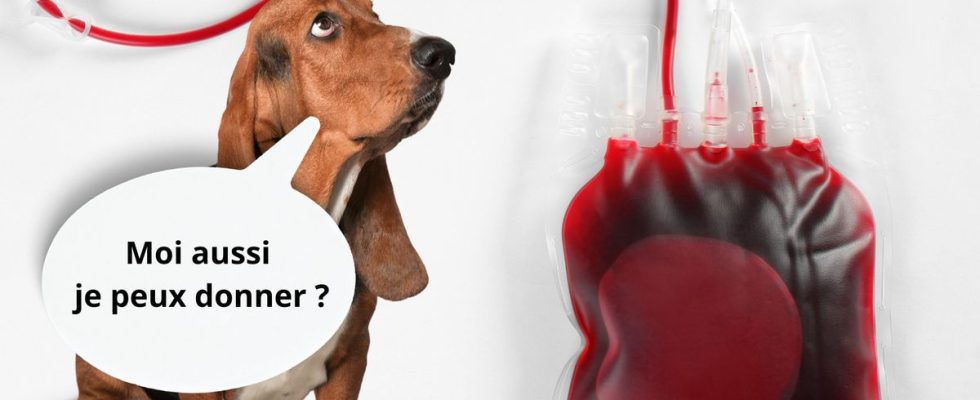What if your dog saved lives? Few people know it, but blood donation is not just reserved for humans: our pets can also help their sick or accident victims.
To make this possibility known, the journal Bastard and the creative agency We Are Social have just launched the #BatardDonneur operation. A campaign encouraging dog owners to post photos of their little hairy creature on Instagram with the hashtag #BatardDonneur. The goal: to create the largest database of canine blood donors. The opportunity for 20 minutes to explain what this blood donation in animals consists of.
Which animal can donate blood?
Only “medicalized” animals such as dogs, cats, horses and ferrets are concerned. As with humans, not everyone can donate blood. Only those in good health, up to date with their vaccinations and who have never been transfused can do their BA. A minimum weight is also required: 25 kg for dogs, and 4 kg for cats. Finally, age: animals under twelve months and over 8 years old will not be accepted.
“Cats must be vaccinated against leukosis and tested against cat retroviruses, such as leukosis and cat AIDS,” adds Françoise Roux, professor of emergency and intensive care of pets at the Nantes Veterinary School, which performs around 300 transfusions per year. “We also require that these are cats that do not go outside, so that they are not recontaminated. » The little felines will also be entitled to an ultrasound of the heart before the sample, in order to verify that they do not suffer from an occult cardiomyopathy which would contraindicate their sedation. And as for anemic people, cats will need to take a small blood test to check their red blood cell levels. Those missing will remain on the sidelines. Françoise Roux recognizes it: blood donation in cats is “quite restrictive”.
Who can the animal donate blood to?
“Most transfusions are done within the same species, but they exist from one species to another,” explains the veterinarian. Before adding: “immunological rigor would dictate that we remain interspecies but sometimes we don’t really have a choice. » Blood from a dog can then be transfused into a cat.
Their blood group is also shown on their small donor card. Because yes, dogs and cats also have one. Eight for the first (the DEA, from 1 to 8) and three for the second (A, B and AB). “For a first transfusion, the dog can receive any type of group,” explains Françoise Roux. For the second, however, the veterinarian will have to ensure the compatibility of the bloods. In the event of an error, a fatal shock can occur within minutes.
In cats, an A can only give to an A and a B to a B. “If a B receives blood from an A, it dies immediately,” explains the veterinarian. On the other hand, ABs are universal donors, but only represent 1% of the feline population. For dogs, it is the rhesus that is important. The most generous dogs are those with negative rhesus. “If it is negative, it can only receive from the same group but can give to negatives and positives,” emphasizes the veterinarian. And the positive can only give to the positive.
How does the collection take place?
In order for your animal to become the star of the dog park, you must first make an appointment at a veterinary hospital. Once there, it is examined by a professional. If he considers it suitable, the little creature is shorn at the neck before being infused into the jugular vein. An operation whose duration depends on the weight and therefore the quantity of blood to be taken. “We take 10 ml per kilo,” explains François Roux. The procedure lasts between ten and thirty minutes and is carried out with or without (light) anesthesia, depending on the type of clinic (twenty minutes with a needle in the neck anyway).
What happens to the blood collected?
Once the blood is collected in bags containing an anticoagulant, there are three options. The first: it is immediately injected into an animal hemorrhaging. The second: the bag is stored “at four °C, for thirty days maximum”. The third: the blood passes through a machine to make preparations based on red blood cells or plasma.
If the red blood cells will also be kept cold for a month, the plasma can be frozen and stored for a year. And if your pet asks for more (because he gets a snack after his act of bravery), know that he can come back to donate blood every three months.

